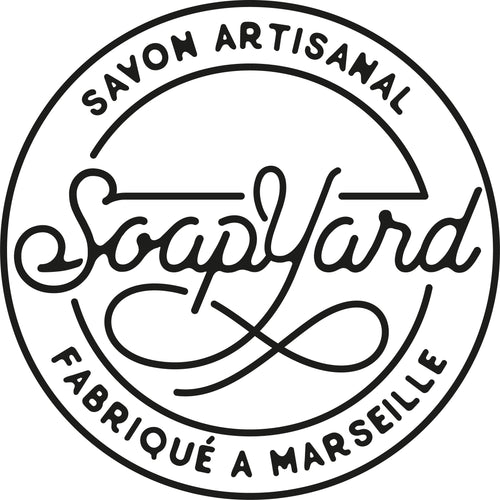At Soapyard, we celebrate the art of natural soap-making inspired by the world’s most iconic traditions. In this installment, we journey to Morocco, a country where centuries-old techniques, vibrant landscapes, and a unique blend of cultural influences come together. From the production of precious argan oil to the thriving markets of Marrakesh, Morocco’s beauty and ingenuity are as inspiring as its natural resources.
Where Is Morocco?
Morocco is located in North Africa, bordered by the Atlantic Ocean to the west, the Mediterranean Sea to the north, and the vast Sahara Desert to the south. Its geographical diversity ranges from the snow-capped Atlas Mountains to sunlit coastal plains and arid desert dunes. This vibrant tapestry of ecosystems has shaped Morocco’s agricultural and artisanal traditions, making it a haven for travelers and craft enthusiasts alike.
Climate and Vegetation
Morocco’s climate varies significantly by region:
- Coastal Areas: Mediterranean climate with mild winters and hot summers.
- Inland Cities: Continental climate with sharp seasonal contrasts.
- Desert Regions: Hot, dry days and cool nights.
The climate has fostered unique vegetation, from the hardy argan tree of the southwest (famous for its oil) to the sprawling olive groves reminiscent of those in Provence.
A Brief History of Morocco
Morocco’s history is a rich tapestry woven with Berber, Arab, and European influences. It was once part of ancient Carthaginian and Roman empires before becoming a major Islamic hub under the Idrisid Dynasty in the 8th century. By the 20th century, Morocco had endured colonial rule under France and Spain, regaining independence in 1956.
Today, Morocco is celebrated for its dynamic mix of modernity and tradition. Its bustling souks, ancient kasbahs, and historic medinas stand as testaments to its enduring cultural heritage.
Moroccan Traditions in Soap and Skincare
What Ingredients Define Moroccan Soaps?
Morocco’s soap-making traditions are rooted in the abundant natural resources of its land:
- Argan Oil: Extracted from the argan tree, native to Morocco. Argan oil is rich in Vitamin E and antioxidants, prized for its moisturizing and anti-aging properties.
- Olive Oil: Used in crafting black soap (savon noir), an exfoliating soap traditionally used in Moroccan hammams.
- Clay and Minerals: Rhassoul clay, mined from the Atlas Mountains, is a key component of skincare products, known for detoxifying and softening the skin.
- Herbs and Spices: Ingredients like rose petals, saffron, and mint often enhance Moroccan soaps and beauty products.
Historical Perspective
Historically, soap-making in Morocco has relied on local fats and oils, much like the traditions of Marseille in southern France, where Soapyard sources its own olive oil-based soaps. While France’s Mediterranean climate nurtures olive trees, Morocco’s unique argan oil is a product of its semi-arid southwest—a stark contrast in vegetation and culture that speaks to the diversity of natural skincare traditions.
Unique Experiences in Morocco
- Cooking Classes in Marrakesh: Learn to prepare traditional dishes like tagine and couscous. A great option is La Maison Arabe Cooking Workshops.
- Hammam Rituals: Visit local bathhouses for an authentic exfoliation and relaxation experience. Look for authentic hammams in Marrakesh or Fes.
- Argan Oil Cooperatives: Near Essaouira or Agadir, visit women-run cooperatives where you can see how argan oil is produced and support local artisans.
- Overnight Sahara Desert Tours: Take a camel trek to stay overnight in a desert camp under the stars.
- Cultural Tours: Book a walking tour of Chefchaouen’s blue streets or Fes’s medina to gain deeper insights into Morocco’s history.
Traditional Items to Buy
Morocco’s souks are treasure troves of artisanal crafts. Consider these iconic items:
- Argan Oil: Look for high-quality, locally produced oil.
- Handwoven Rugs: Vibrant Berber rugs are both decorative and cultural artifacts.
- Leather Goods: Marrakesh and Fes are renowned for their tanneries.
- Ceramics: Colorful zellige tiles and pottery are perfect souvenirs.
- Spices: Saffron, cinnamon, and Ras El Hanout are commonly sold in souks.
Visiting Morocco
Getting There
Most international travelers arrive via Casablanca’s Mohammed V International Airport (CMN) or Marrakesh Menara Airport (RAK). Direct flights are available from major cities worldwide.
Getting Around
Morocco boasts an efficient train system connecting key cities like Casablanca, Rabat, Fes, and Marrakesh. For more remote areas, shared taxis, buses, or private tours are popular options. For more information, visit ONCF, Morocco’s national railway service.
Tourist Boards
For comprehensive planning resources, check out these official sites:
Soap-Making in Morocco vs. Southern France
In southern France, olive oil is the mainstay of traditional Marseille soap, reflecting the Mediterranean region’s lush vegetation. In contrast, Morocco’s argan oil, sourced from semi-arid landscapes, showcases a unique adaptation to its environment. Both traditions emphasize the use of locally sourced, sustainable ingredients—a philosophy we embrace at Soapyard.
Explore our travel-friendly soaps, crafted in Marseille, and discover why they’re perfect for your next adventure.
#Morocco #travelguide #Moroccan #traditions #arganoilsoap #blacksoap #hammam, #eco-friendly travel, #Moroccanculture #moroccanoil

